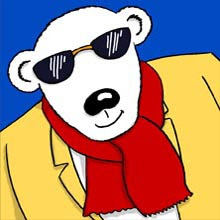So, where were you when Neil Armstrong stepped out onto the moon?
As far as I recall - and yes, I was alive at the time, hard to believe in one so fresh faced and lovely - I was in bed. I remember scrambling out for the re-runs at 6.00 a.m. and spending the rest of the day at school trying to keep my eyes open.
I also spent the next few days buying up all the newspapers, in training to be a geek before the word was invented. I then filed them all away in an old suitcase (in a bid to be an early nerd as well). And during all the Apollo frenzy last week, a trip into the loft revealed … taraa, they’re all still there! So the last week has been a complete lunar nostalgia fest. And as I re-read all those old papers, I experienced again that old feeling of guilt about not doing my homework.
Whilst it’s possible to recapture some of the excitement of the period (readers under 48 need not apply), it is, of course, impossible to get a feeling of what it would really be like to stand upon the surface of the moon. Probably the nearest most of us will get is to look at the cleaned up, archived photographs in the book, Full Moon. Or go and look at the paintings by Alan Bean. That’s right, one of the moon walkers. He was the 4th person to walk on the moon, in November 1969. When he came back home, realised how lucky we were to live on Earth and was inspired to take up painting.
No cartoonists have yet made it to the moon (I am open to offers). It’s probably just as well. You may be aware there are people out there who doubt the moon landings were real and think it’s all an elaborate conspiracy. Designed, I presume, to give them a vapid and tawdry career spouting cobblers on TV. A cartoonist couldn’t resist messing with their heads by scratching out in the lunar dust: “IT’S ALL FAKE!”
Incidentally, drawing cartoons on the moon is now entirely feasible. NASA’s new LRO has already sent back pictures of the Apollo landing sites, showing the Lunar Module and the path made by Aldrin and Armstrong. Let me repeat, there is one cartoonist not a quarter of a million miles from where I sit who would go in a heartbeat. (Although a spaceship would be more useful.)
Was Apollo worth it? The lunar landing programme cost $150 billion in today’s money. That seems an awful lot until you discover that bailing out the American banking system has just cost the American tax payer $700 billion. Which of those two achievements is the most uplifting and inspirational?
On the other hand, spending $700,000,000,000 to send the world’s bankers to the moon seems a fantastically reasonable deal. We could even save some money: Don’t bother to give them space suits.




